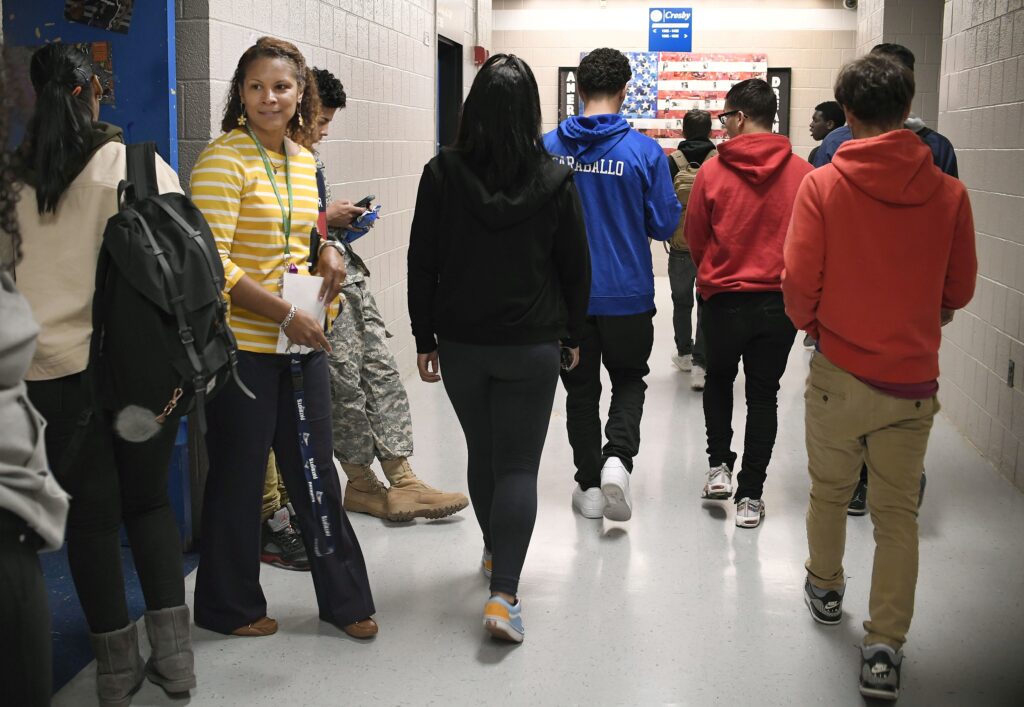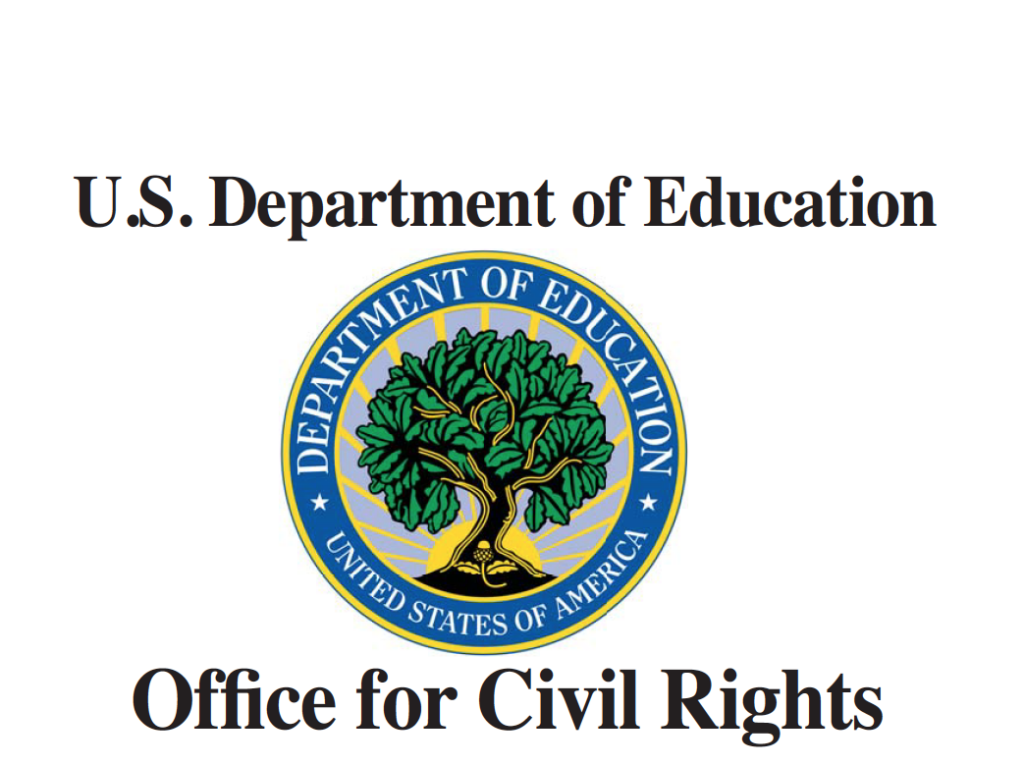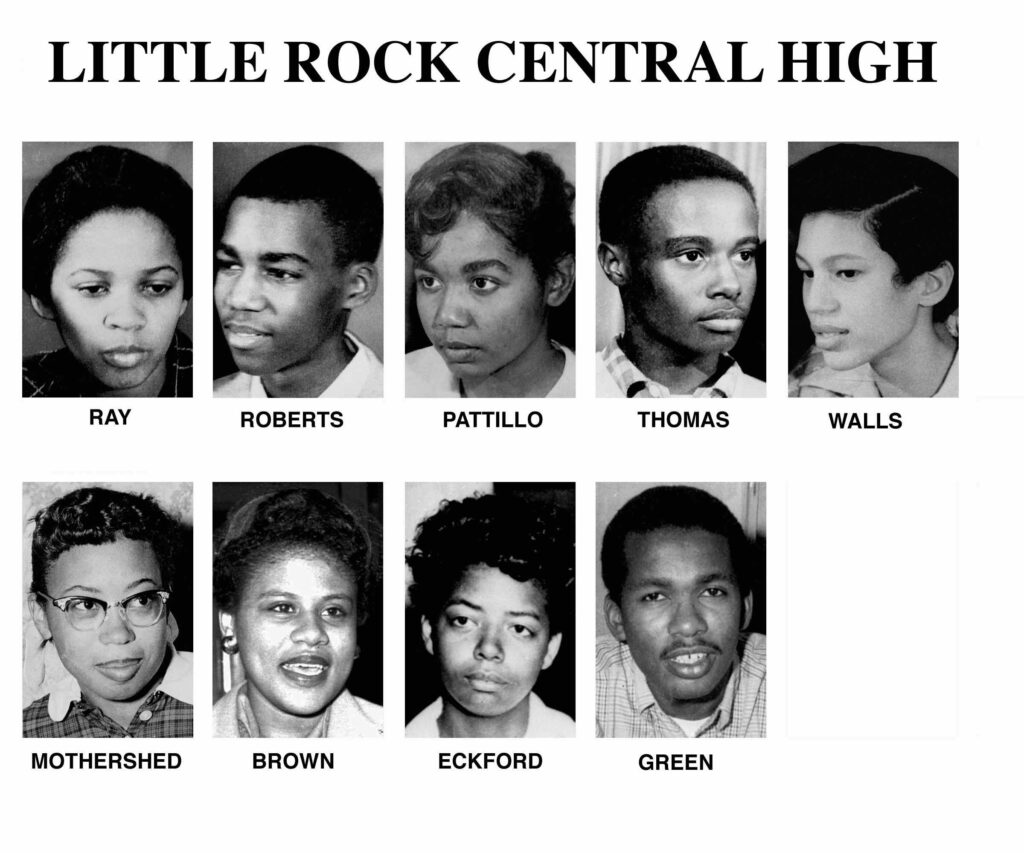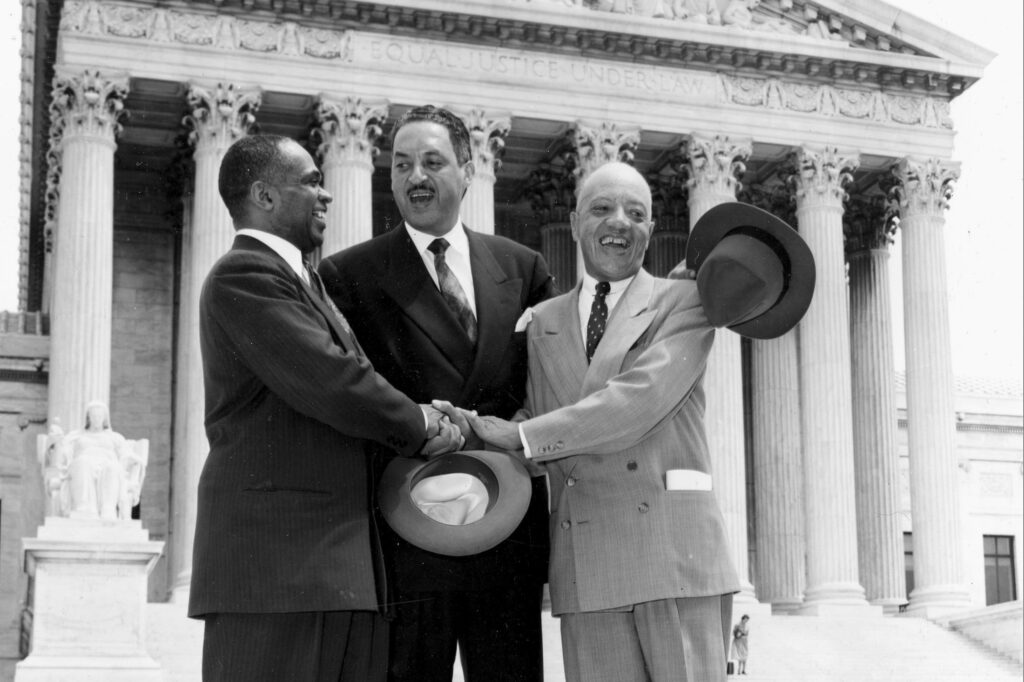In 1940 the cost of a stamp was three cents, the first Social Security checks were paid, the Cincinnati Reds won the World Series, and psychologists Drs. Kenneth and Mamie Clark conducted a “doll study” with disturbing results. Their study, with children ages three to seven, used four dolls, identical except for color, to test children’s racial perceptions.
The majority of children expressed a preference for the White doll and attributed positive traits to it. The Clarks, a husband and wife team, concluded that “prejudice, discrimination, and segregation” created a sense of inferiority among Black children, which negatively impacted their self-esteem.
Fast forward 14 years later and Dr. Kenneth Clark was called to testify in the landmark Brown v. Board of Education case before the Supreme Court argued by Attorney Thurgood Marshall, who led the NAACP Legal Defense and Educational Fund. The Supreme Court cited Dr. Clark’s 1950 paper in its Brown decision,
“To separate [African-American children] from others of similar age and qualifications solely because of their race generates a feeling of inferiority as to their status in the community that may affect their hearts and minds in a way unlikely ever to be undone.”
While true, it was only part of the research. Dr. Clark was concerned the court failed to cite two other conclusions he had reached: that racism was an inherently American institution, and that school segregation inhibited the development of White children, too.
“The court’s resolve to put Black children in White schools is the major affront to the Brown v. Board of Education findings,” Dr. Kevin Washington, past national president of the Association of Black Psychologists, told The Final Call. “The resolution has never been addressed adequately.
That is what has created the inequitable treatment of Blacks. Recurrent attacks on curricula, and book banning is a throwback to what was actually occurring at that time. Where the message was of inferiority, of Blackness or anything that began to promote something differently was challenged,” he said.
“After 70 years we find ourselves in the position of still having identity confusion. We’ve had some educators to come with strong educational models. However, it’s always been an attack on the system. The Brown verdict, simply putting Black children in White schools, was not the resolution.
The real victory comes when the curricula shifts and the content is affirming to Black children in all walks of life. They can see themselves as being powerful as agents of change, and that they are purveyors of their own destiny.”
Dr. Washington added, “That’s a major issue when we talk about the Brown v. Board of Education. The principle that it was founded upon was flawed, that the environment Black students were in was inherently inferior. Instead of seeing the conditions Black students were experiencing as detrimental, to the identity development and formation of Black and Brown children.”
Black-on-Black Education
Once upon a time Black children were taught exclusively by Black teachers. Then came the May 1954 Supreme Court Case Brown v. Board of Education which allowed Black children to go to White schools. Research by Dr. Leslie T. Fenwick in “The Ugly Backlash to Brown v. Board of Ed That No One Talks About,”shows that 100,000 highly qualified Black principals and teachers were summarily fired.
White superintendents, school boards, and parents did not want Black teachers in their children’s classrooms. Neither did they want Black principals leading schools and supervising White teachers.
Fast forward to 2024. Black children going to school with White children has failed to provide Black families with thriving, well-resourced educational environments, relevant curriculum, safety and freedom from White supremacy.
Nearly 80 percent of public school teachers are White while more than half of public schools are filled with non-White children. However, studies show that Black teachers produce better academic and behavioral outcomes for Black students compared to their White counterparts.
The significance of having a Black teacher goes back to Philadelphia’s Caroline LeCount in the 1800s who said, “colored children should be taught by their own.”

University of North Carolina research found that having a Black teacher has positive effects—higher educational attainment and lower rates of discipline—for Black students, with the strongest effect often among Black males from low-income households.
Their research found the benefits of having a Black teacher are so important that students who had a single Black teacher were more likely to go to college, more likely to graduate high school, and less likely to drop out. Black boys in poverty, who had a single Black teacher, were up to 39 percent less likely to drop out and 29 percent more likely to enroll in college.
Black educators have mixed feelings about Brown v. Board of Education. “I definitely think it has helped students, having Black students having access to institutions that were predominantly White.
I also think on the same accord, that going to a predominantly White school doesn’t necessarily prepare you more than going to an all-Black school. I think it comes down to resources and having an adequate surplus of resources,” Middle School Math teacher Ashley Cobb told The Final Call.
“Some of us learn in ways in which we want to be active. My first year teaching was at a Freedom School. There’s no predominantly White institution that can replicate a Freedom School.
I also think in reverse or in opposition of Brown, that some White students will benefit from going to predominantly Black institutions, which I’m seeing more of now.”
Cashawn Merritt is a high school math teacher. She told The Final Call, “I think it (Brown) was helpful to a degree because it gave Black people access to resources that weren’t available to them.
Even though we were educating our own prior to that decision, we didn’t necessarily have upgraded materials. We didn’t have the best resources at our disposal. I think with busing and all the other legislations that passed, it allowed opportunity for children who might not have had it otherwise.”

A major concern for parents is the high rate of suspension and expulsions for Black children in America’s public schools. Research by the Department of Education Office of Civil Rights on school suspension, and expulsions found that Black boys make up nearly eight percent of public school enrollment but were 25 percent of the boys with out-of-school suspensions and 26 percent of expulsions.
Black girls were eight percent of enrollment but 14 percent of the girls with out-of-school suspensions and 12 percent of expulsions. Black children in public schools also face increased school-based arrests.
“Black students who have Black teachers are less likely to be disciplined unfairly, and over-policed,” middle school special education teacher Simon Miller told The Final Call.
“They are less likely to be suspended, expelled, or even referred for disciplinary issues. Black teachers are also more likely to push Black students into more rigorous classes like AP and International Baccalaureate programs.
Brown v. Board of Education put Black children in the bull’s eye for non-Black teachers. A study by the Upjohn Institute found that non-Black teachers of Black students have significantly lower expectations than do Black teachers. These effects are larger for Black male students and math teachers.
White teachers were less likely than Black ones to predict that their Black students would go on to graduate from college. Research has also found that on average, Black students have lower test scores than White students, they attend schools with fewer resources, and they are less likely to graduate from high school and college.
Elementary school teacher Tiffany Harrell is concerned states are not following the mandates of Brown. She told The Final Call, “I feel like a lot of states are not following and abiding by the law.
What I mean by that is you still have a lot of city schools who are less fortunate, don’t have the proper textbooks, don’t have the proper technology, and they aren’t offered the same type of courses.”
“If you go to predominantly White suburbs you’ll get all the technology you need, you’ll get so much funding because of the parents. They offer more as far as like AP (advanced placement) classes, than for example the predominantly Black schools … lots of southern states are trying to get rid of a lot of AP classes for African Americans as well as, African American Studies.”
A better, more positive outlook
Dr. Washington explained that having Black teachers is even more valuable to the way a student holds themselves in class. Seeing Black teachers tells students they have value, they have worth, and brilliance that can be seen. Black teachers can see the potentiality of students throughout the entire process and they work hard to bring that out.

Therefore, students feel that they are connected in the context of education. Further, it is doing its true purpose, which is to bring out the existing high potential rather than simply the transmission of information.
“When we talk about education, we know that it does three things for them. It gives them a sense of identity. That is, it tells them who they are and how they have value and worth in the world. It gives them the idea of potentiality, what they can become because they see an educator looking like them.
Then they can also be able to understand what they can become. The third issue is that typically the educator will be able to educate in a culturally relevant perspective.”
When the Nation of Islam started in the 1930s, the followers were instructed to take their children out of the public school system and educate them at home. In 1931, a truant officer knocked on the door of the Honorable Elijah Muhammad and his wife Clara.
The officer demanded that they send their children back to the Detroit Public Schools. They, as well as other Muslim families, refused.
In 1934, the Honorable Elijah Muhammad and 18 instructors at the University of Islam were found not guilty of contributing to the delinquency of minors. However, Muslim families paid a high price back then to educate their own children.
In his book, “A Torchlight for America,” the Honorable Minister Louis Farrakhan explained that the true purpose of education should be the proper cultivation of the gifts and talents of the individual through the acquisition of knowledge.
“We need our own teachers because we need those with a like mind, a desire to give children what they need,” Shahid Muhammad, a math teacher at Chicago’s Muhammad University of Islam, told The Final Call. “Black teachers understand their learning styles. You have a better chance of that teacher having a love for the students, and a desire to see the students excel.
“The enemy’s school system is centered around White supremacy. Many European teachers don’t see Black students in the right light. They don’t see them as having the ability to excel because of White supremacy, racism and a racist mind. When Black children are in the classroom with Black teachers, they tend to have a better outlook, a more positive outlook of their own students.”
















